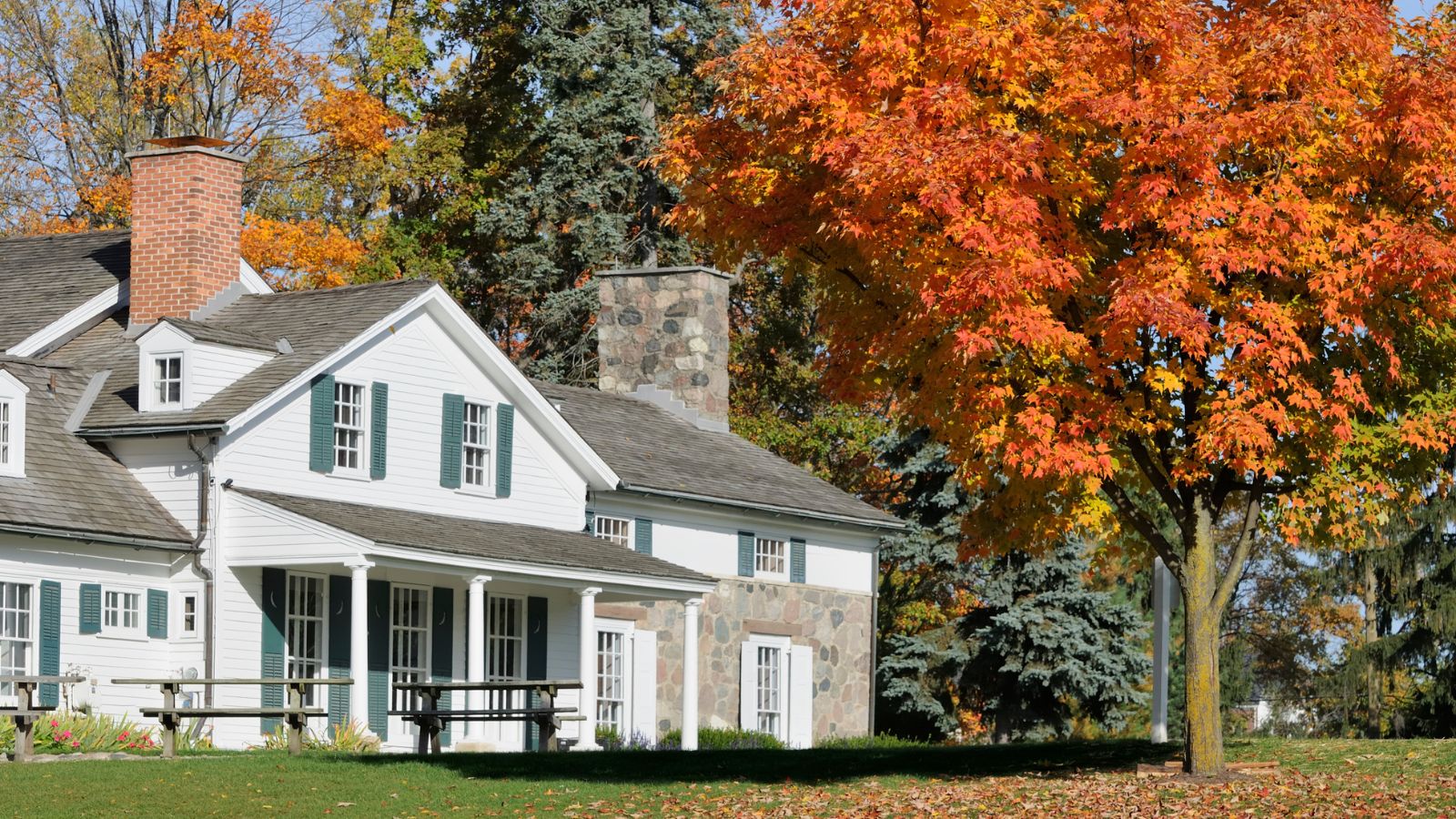
As fall weather rolls in we will be looking to spend a little more time inside in the comfort of our homes. However, we are not the only ones.
There are plenty of common fall pests that will also be on the lookout for a comfortable place to hunker down over winter and our homes often offer the ideal spot. Warm, dry, and full of food, it is vital to identify indoor pests and learn how to get rid of them before they pose a health risk.
Here, we break down the five common pests to watch out for and protect your home from in fall, as pest experts explain why they can pose such a nuisance.
Common fall pests
When preparing a home for fall, it is vital to check for pests and take steps to remove temptations that lure them toward your property line. Meg Pearson, pest expert and training manager at Critter Control suggests that keeping outdoor areas clean and removing food sources is the best approach.
Meg says, ‘Small animals thrive in unkempt yards and lawns; if they get comfortable spending time in and around your yard, they may get more and more tempted to approach the house and try to find a way inside. In autumn, homeowners should be sure to regularly rake the leaves off their lawn and consistently mow their grass, so their yards do not get overgrown and covered with leaves, providing ample opportunity for animal encroachment. Additionally, it is recommended to keep wood and brush piles organized and off the ground if possible.
‘Bird feeders that drop bird seed to the ground are known to attract various critters to your yard and home; you may want to consider getting rid of your bird feeders if you encounter animal issues in and around your home,’ she continues. ‘Pet owners should be sure to keep all pet food inside, so as not to attract unwanted critters. Additionally, many animals are fine with eating garbage and food scraps, so outdoor trash cans and bins should be sealed and secured.’
With that in mind, these are the five common fall pests to keep an eye out for as you prepare for the season ahead.
1. Raccoons
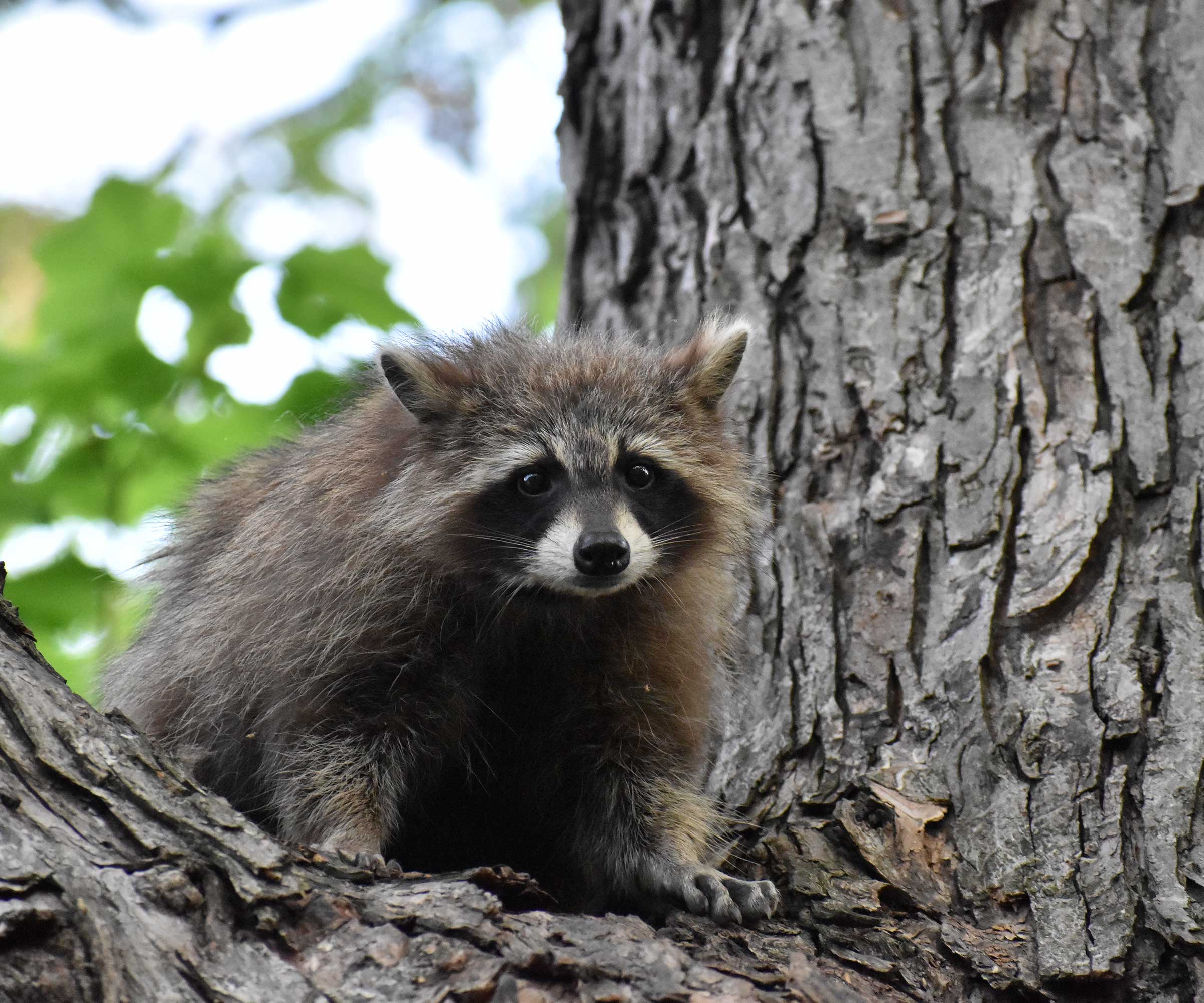
Raccoons can look cute from a distance, but they are far from the ideal neighbors. From digging through the trash to carrying other pests such as fleas and ticks, these masked bandits can prove a huge nuisance. Meg Pearson, pest expert, says that knowing how to get rid of raccoons humanely is a must for fall.
‘Raccoons may look a bit small but they are exceptionally strong and are able to exploit exterior weaknesses in homes, in order to gain access inside,’ Meg begins. ‘Most commonly, they will attempt to enter through the roof by using their strength to rip up shingles to enter the attic, but they have also been known to come in by tearing through soffits, vents and more. Once inside, raccoons most commonly nest in attics, chimneys, walls, basements and crawl spaces. Be careful opening your outdoor trash containers; raccoons can be found inside them, feasting on trash and food scraps.’
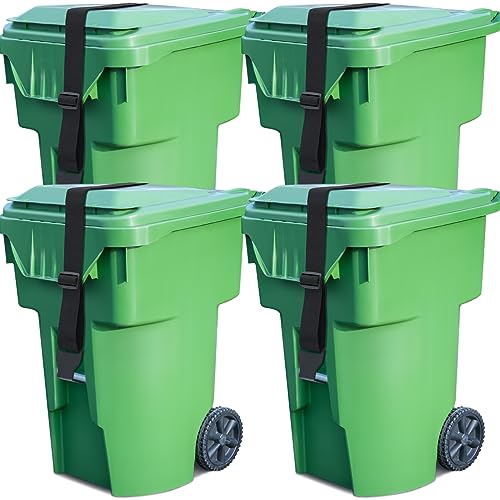
Mammals, especially hungry ones are smart. Keep them out of your lidded trash cans by adding an adjustable lock strap such as this. It's highly rated by shoppers and comes in black or red. If you prefer a lockable trash can with lid, try the Rubbermaid key lock trash can on Amazon.
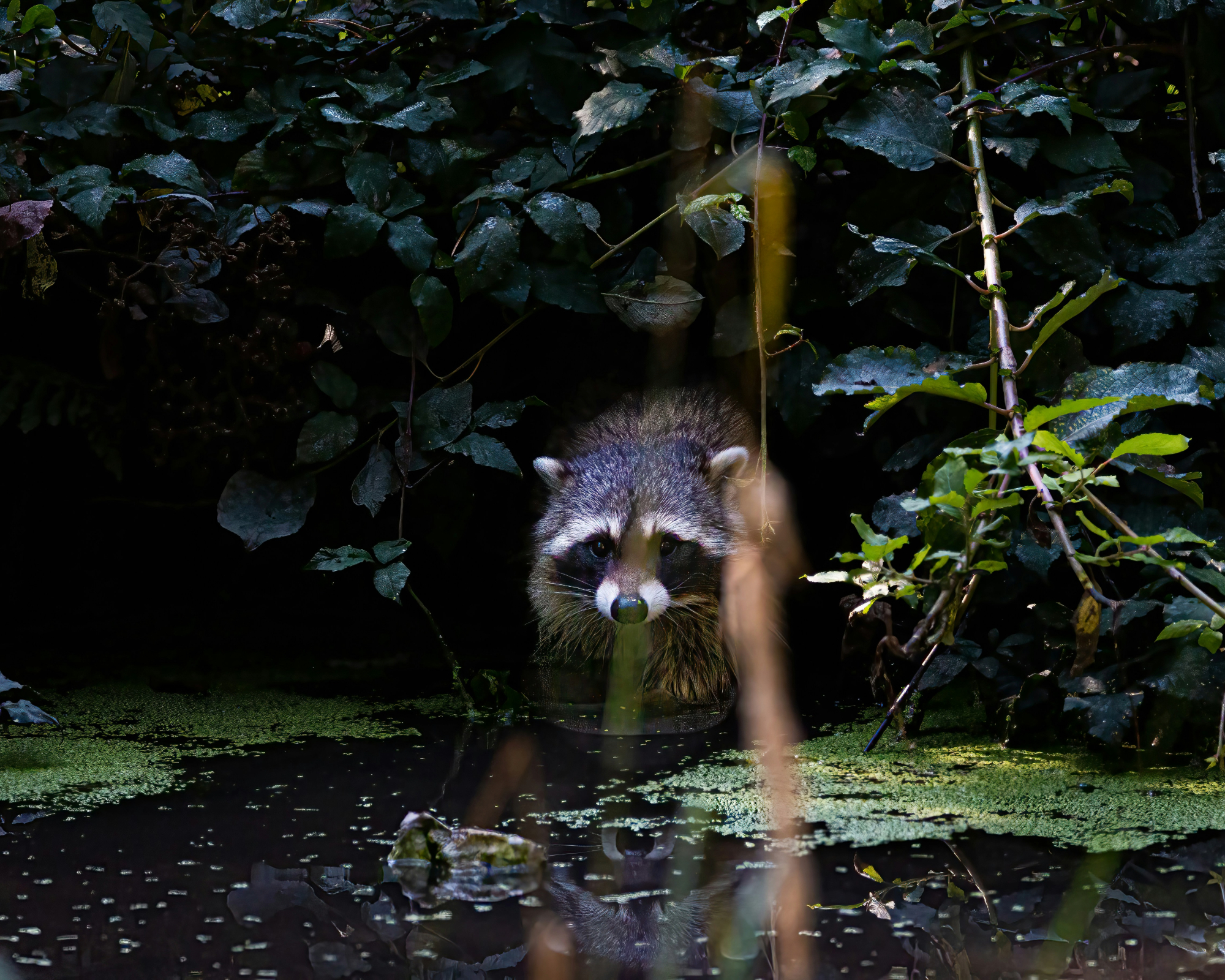
To prevent raccoons from becoming a permanent fall and winter backyard pest, start by removing food sources. Then, consider ways of deterring them and humanely scaring them off of your land. Matthew Wilson, gardening and pest expert, CEO of Handy Gardeners, suggests using an Orbit Yard Enforcer Motion Activated Sprinkler, from Amazon, to keep raccoons moving rather than encouraging them to settle in your home.
If you are a little more experienced dealing with pests or are concerned that a raccoon has already moved in, Matthew adds that a ‘Havahart Live Animal Cage Trap is an example humane trap, also at Amazon, allows one to catch a raccoon safely before relocating it elsewhere.’
2. Squirrels
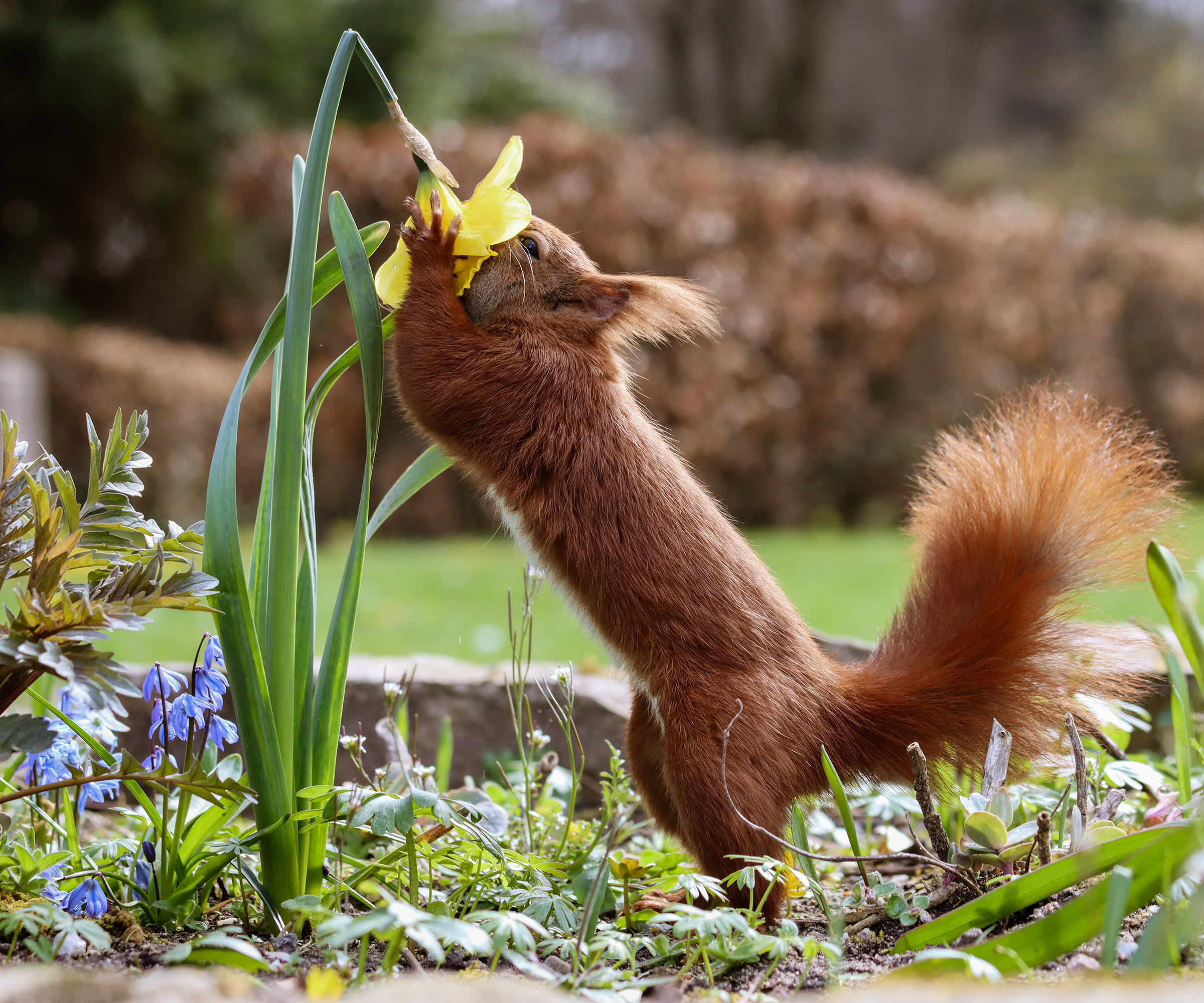
Other cute but pesky pests in fall are squirrels. While they generally pose no harm when they are scuttering around your yard, they can be incredibly disruptive if they make their way into your home, making getting rid of squirrels a top task for the cooler months.
Meg Pearson, pest expert, says, ‘Squirrels typically enter homes through the roof making their way into the attic. When inside homes, squirrels will eat most foodstuffs they can gain access to, including garbage and various food scraps.
‘Squirrels use their muscular builds and sharp claws and teeth to cause a lot of damage on the interior and exterior of a house. They often use their powerful teeth to gnaw on wooden support beams, fascia, soffits, eves, gable end vents and other areas located around and above the roofline. This behavior can go from costly to dangerous when they gnaw on electrical wires, which could potentially lead to a house fire.’
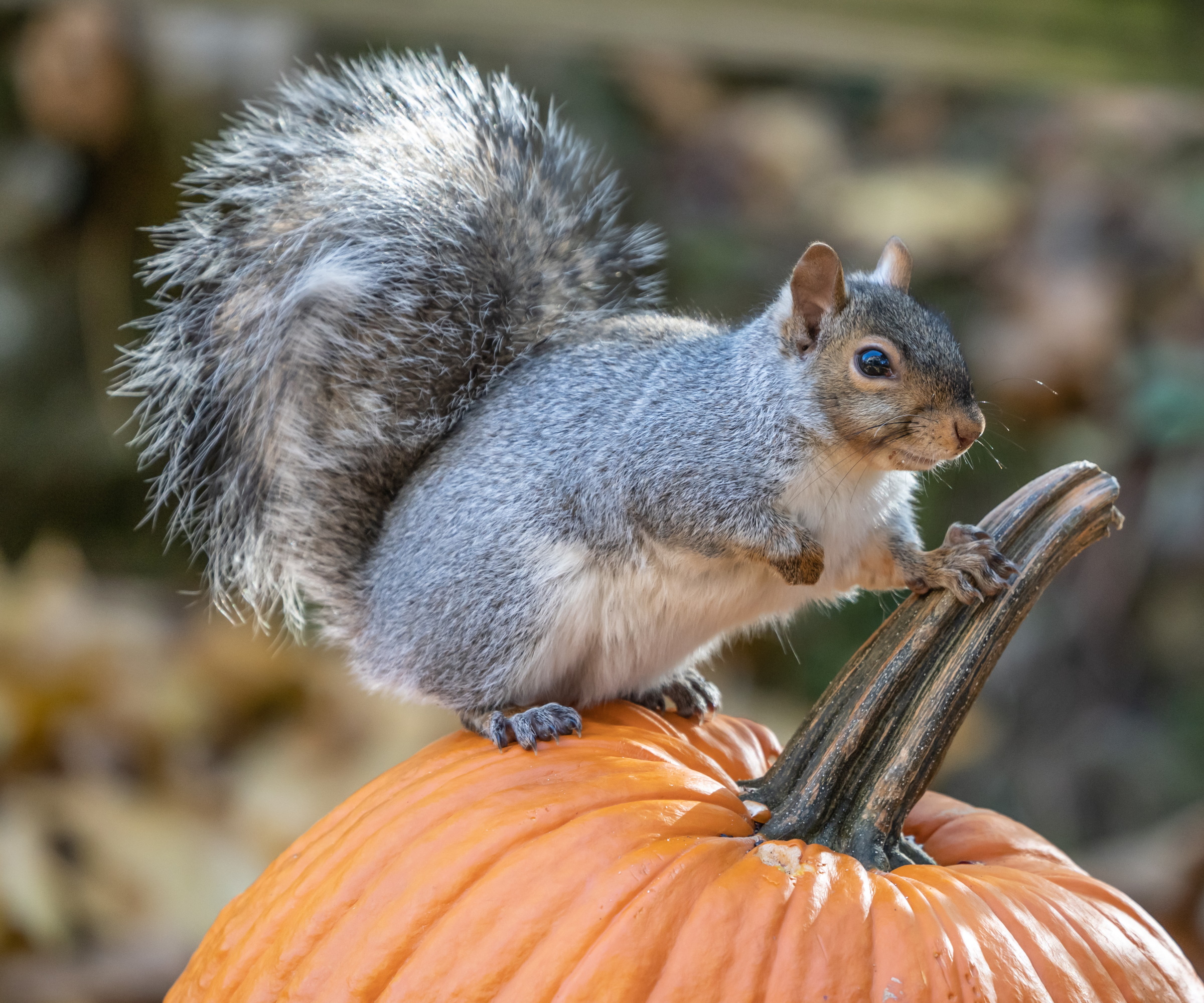
Luckily, it is relatively easy to get rid of squirrels in the attic and prevent them from entering your home. Start by removing any easy food sources. Matthew Wilson, pest expert, suggests keeping squirrels away from bird feeders by using squirrel-proof ones. Planting squirrel-repellent plants can also help with this.
If they have moved into your home, you can use plug-in ultrasonic devices, available at Walmart, to emit a sound silent to humans, but annoying to pests. This should encourage the squirrels out of your home on their own accord.
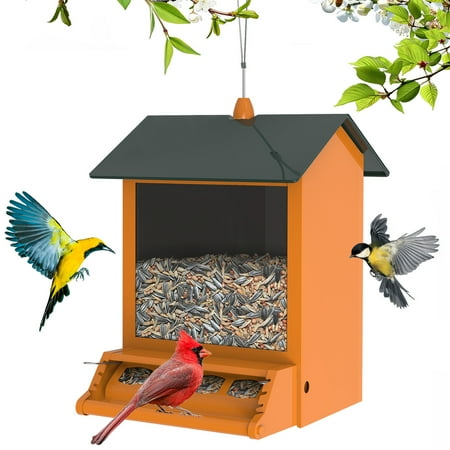
This bird feeder has weight-activated feeding perches that will give way under the weight of a squirrel to stop them from feeding on the bird seed. This, in turn, will encourage them to look elsewhere for food and stay away from your bird feeder, and hopefully, your home.
3. Opossums
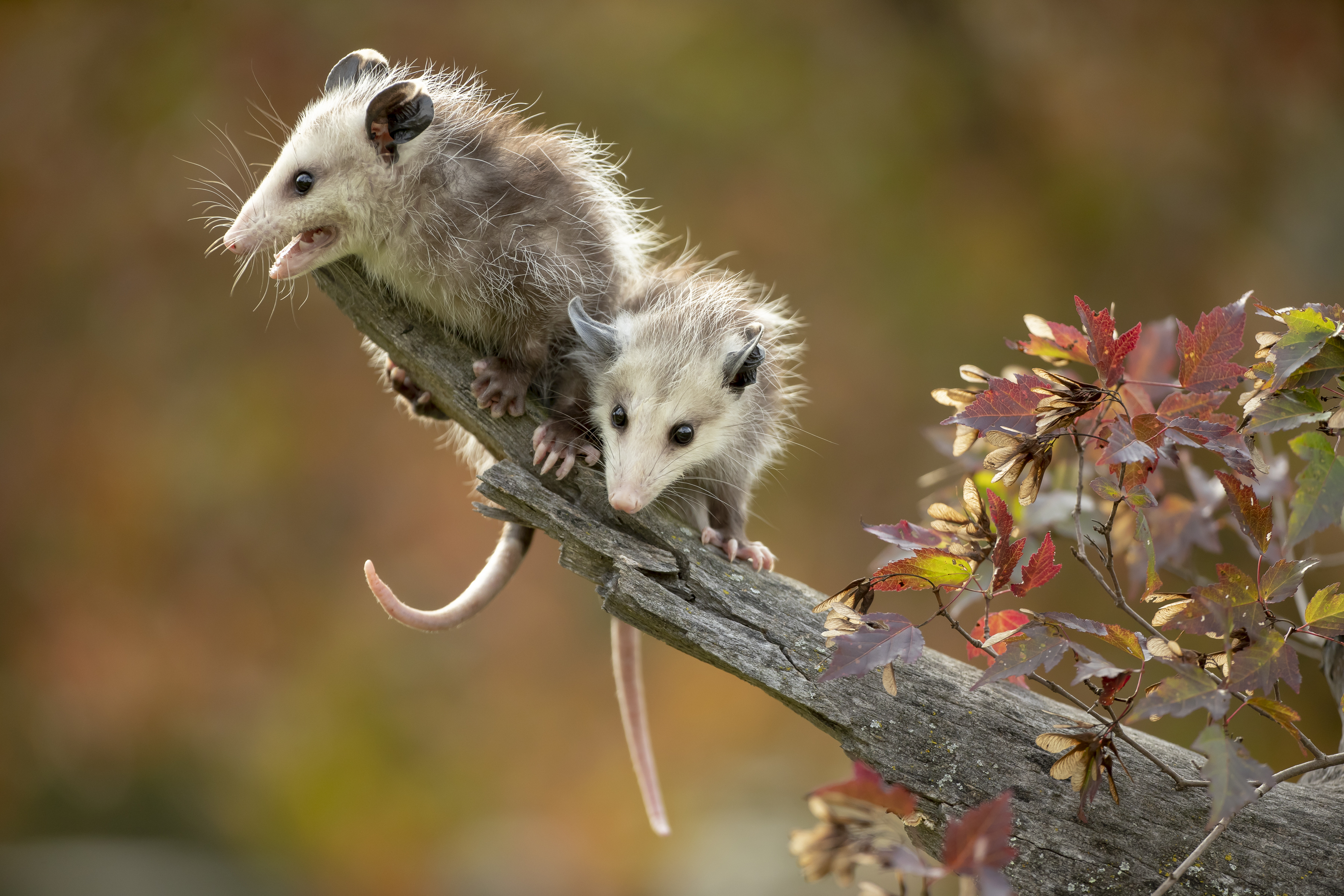
Keeping opossums away from your home is essential in fall. Although these dexterous animals aren't likely to cause any structural damage like squirrels, they are capable of carrying some of the world’s most dangerous diseases, from tuberculosis to toxoplasmosis and beyond.
Pest expert Meg Pearson says, ‘Opossums can be found in quite a few places in and around the home. Inside the house, you can often find them living in your attic. Outside the house, you can find them on your roof, under your deck, in a shed, or even under your house. These omnivores are opportunistic scavengers and will feast on a wide variety of foods.'
Their natural diets include insects, ticks, small rodents, frogs, birds, frogs, birds and berries. 'On your property,' Meg explains, 'they tend to eat vegetables, fruits, garbage, bird seed, pet food, meat and more. As the weather cools, they tend to prefer meat-based meals, over bugs and vegetables.
‘To avoid confrontation, they will play dead so predators leave them alone. Opossums are opportunistic and don’t typically cause physical damage to enter a home but they will use an opening to gain entrance if they find one. When inside or around a home, they can spread diseases like tuberculosis, spotted fever, and more, in addition to carrying ticks and other parasites.’
Because of their risk to human health, getting rid of opossums needs to be done quickly and carefully. Matthew Wilson, pest expert, suggests using repellents in the first instance to ward opossums off. ‘Critter Ridder Animal Repellent, at Amazon, is among those natural products made out of ingredients like black pepper and capsaicin (found in chilies), which work effectively well to repel possums. Combine this with sturdy wire mesh barriers so that they cannot dig under decks or yards anymore.’
4. Rats
Rats are some of the most hated pests in the world and for some good reasons. They can carry ticks, fleas, and diseases wherever they go. This means getting rid of rats should be at the top of your to-do list for fall.
When looking for rats in your home during fall, Meg Pearson, pest expert, suggests checking the basement, attic, ceilings, and crawl spaces, and listening into your walls as rats burrow into your building looking for cozy, hidden spots to feed and breed.
Meg explains, ‘Rats have strong teeth and jaws, allowing them to chew through many things inside a house, including wood, vinyl, thin metals, wood, plastic and more. They are also known to chew through cables and wires, potentially starting detrimental electrical fires in a home. A rat’s particular taste can depend on the food that is easily accessible in its natural ecosystem, but inside the home, they tend to gravitate toward cereals, grains, pet food, crumbs of all kinds, and much more.’
When clearing your home from rats and getting rid of rodents in walls, it is often best to consult a professional, especially if the rat problem is large or they have started to cause structural damage. In the meantime, consider liberally spraying potential access points with the smells rats and mice hate to keep them out of your home, and putting down rat and mouse traps to help round the offenders up.
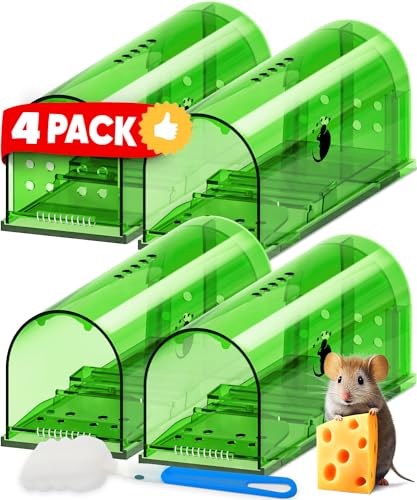
Complete with cleaning brush, this four-pack of humane mouse and rat traps will capture your unwanted furry visitors but won't kill them, allowing you to remove them from your home and release them somewhere more suitable. Be mindful if they have babies nested, they might return so continue using the traps to remove all members of its family.
5. Mice
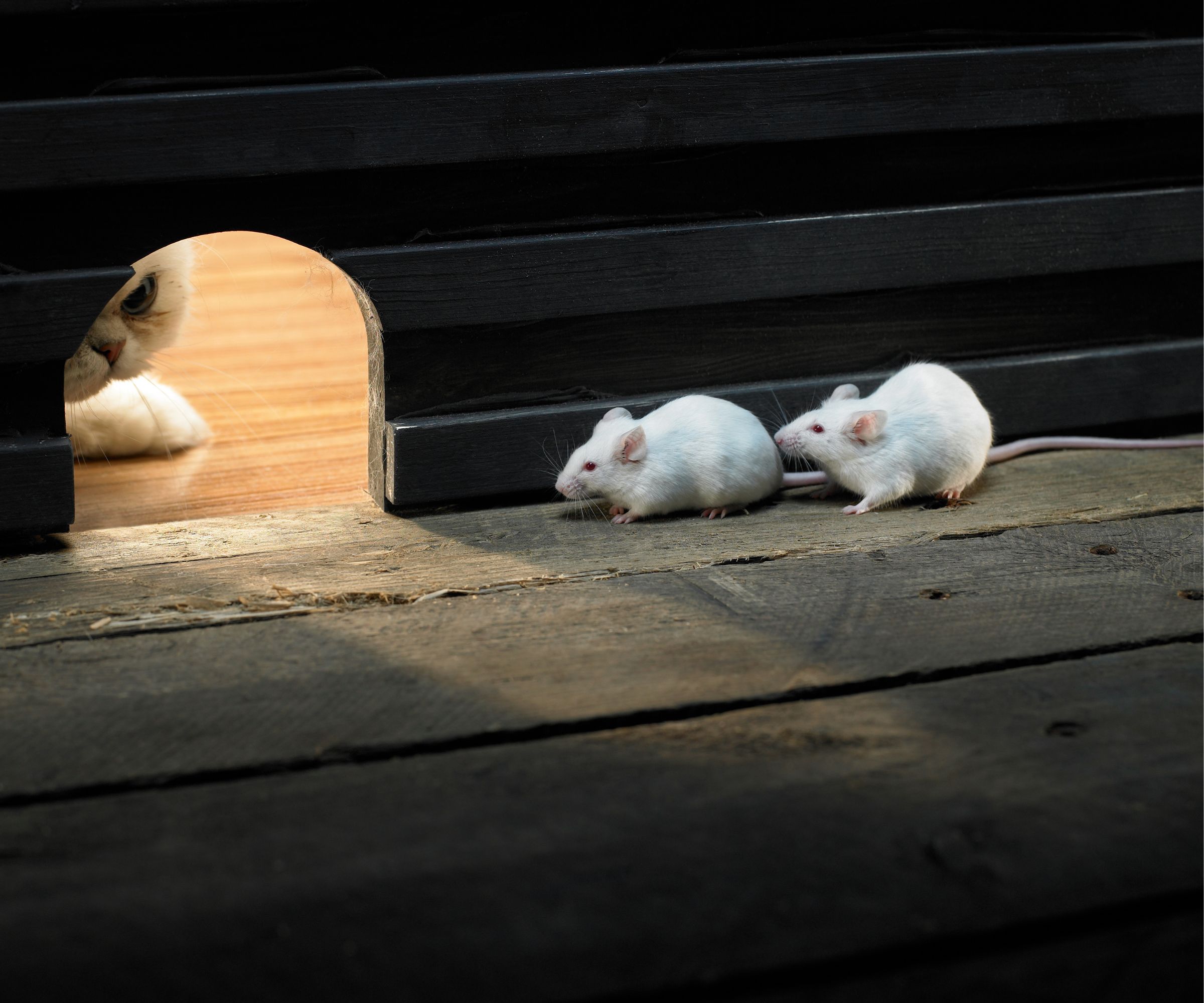
Mice might be smaller and significantly cuter than rats, but they pose many of the same potential risks. Getting rid of mice is, therefore, equally as important.
Pest expert Meg Pearson says, ‘The house mouse is the most common type of mouse in populated areas. They are small, slender rodents with large ears, sensitive noses and small eyes. Their fur is typically dusty brown or dull gray on top, with lighter shades along the chin and stomach. With mice being so small, the opportunities are almost endless as to where a mouse can enter.
‘Mice may try to enter your home through screen doors that don’t properly latch or have tears in their mesh, openings along the roof line, and crawl spaces. Once inside, they are known to live in various areas of the house, including attics, inside walls, kitchens, and crawl spaces. Mice feed at least 20 times each day and will sample just about any available food they can find, so be on the lookout for food that has been nibbled at and discarded in your kitchen or pantry.'
Mice traveling around your home and food supply can cause the spread of unpleasant diseases. ‘They are known to urinate and defecate in all areas of the home they frequent. As with other mammals in the home, mice commonly chew on just about anything they can access, including wires and cables.'
Keep your dry goods in sealed plastic or glass containers and do not leave any open and available to these opportunistic little scavengers.
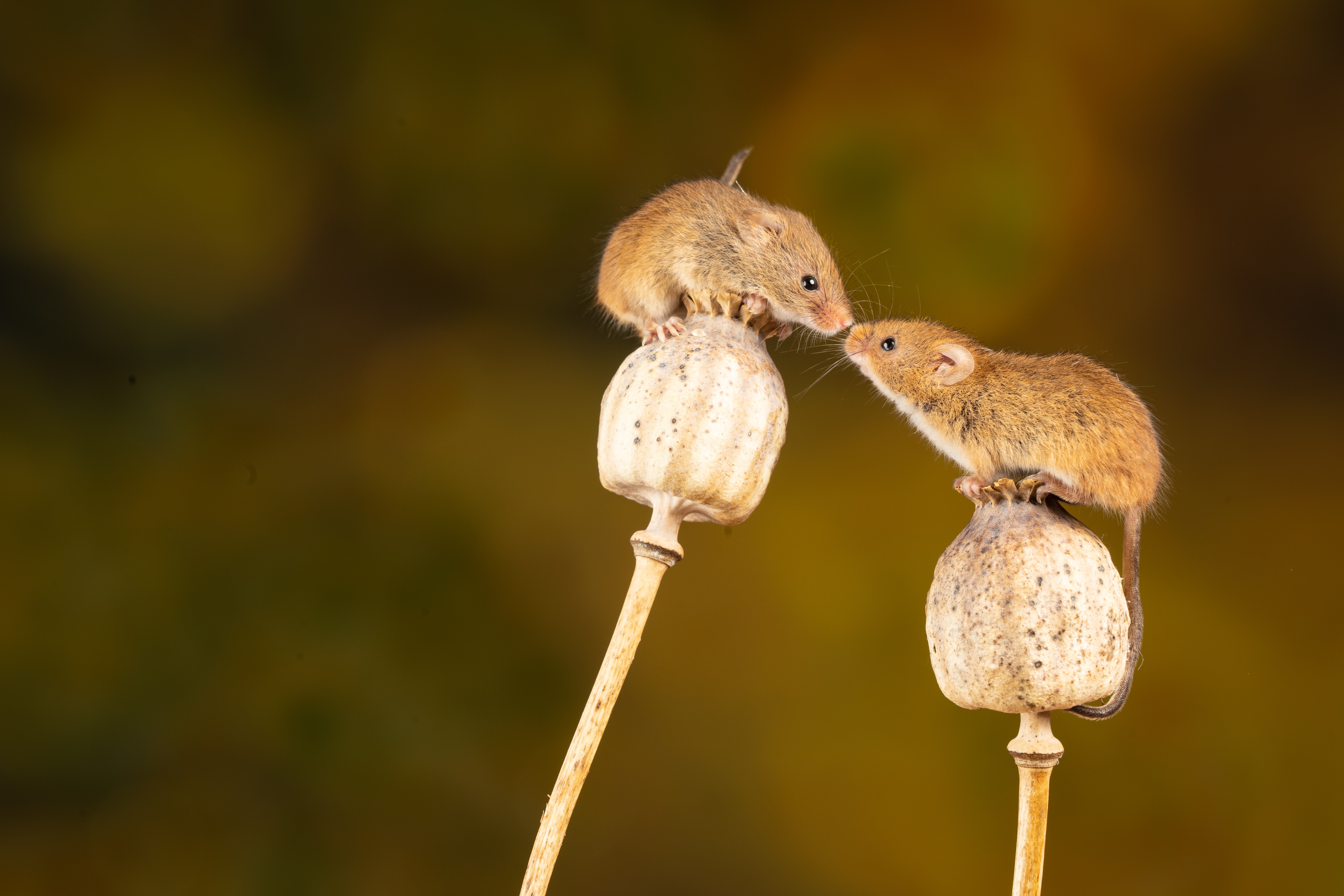
Similarly to dealing with rats, one of the best ways to prevent mice from getting into your house is to block up access points and use heavily scented sprays that deter them from getting too close. Using peppermint oil to get rid of mice is a common approach.
Matthew Wilson, pest expert, adds, ‘MouseBlocker, an ultrasonic device from Amazon, could also work well as a preventive measure outside walls since it uses ultrasound waves which repel mice from garages or sheds.
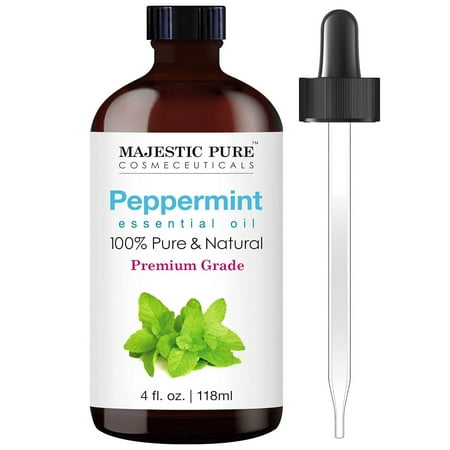
Combine 10 drops of peppermint oil with two cups of water and shake in a spray bottle before spraying liberally around access points and the exterior of your home to deter mice. It will need regular reapplication to remain effective.
When dealing with pests, remember that natural pest control methods can be effective for minor problems and as a means of prevention, but might not work for larger, more serious infestations. If you are struggling to deal with a pest problem, always consult with professionals before it gets significantly worse.







